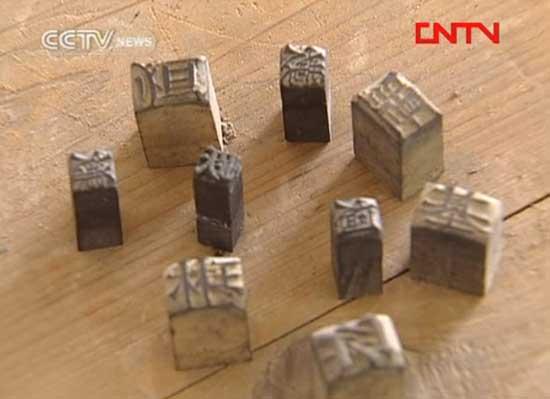Invented in 1041, it is one of the four great ancient Chinese inventions. The old-style of printing texts used characters individually sculpted on wood seals. You would think that this ancient method had long since been replaced by ink-jet and laser printers. But our reporter Ma Zechen takes us to a small village in East China's Jiangxi Province where local residents are still hanging on to their brushes and knives. In this seemingly ordinary house is an extraordinary treasure that can't be found anywhere else. The secret of old-style Chinese printing. Composed of thousands of tiny seals, the plates cover almost all the frequently used characters. But this is no dusty old museum, but a storehouse containing finished works. But where are their owners? 
In this old temple 10 km away from the workshop, the artisans busy with their latest project, printing a genealogy book for a local family. The knives and brushes are all self-made and the working conditions are a far cry from a modern workshop. The team is led by Jiang Zhixing. He's in charge of crafting the detachable characters, while two other people choose the required characters and set them up for printing. 
The characters are arranged in the proper order and the ones used most frequently have several duplicates. The method is almost the same as that used a thousand years ago. Ink is brushed on the plate and then the paper is applied. The result looks as perfect as that from a modern printer, but added beauty from its intricate calligraphy and historical significance. Jiang Zhixing, old-style Chinese printer, said, "I began to learn to sculpt with my uncle in 1984 and was capable of doing it myself after three years. Now I work as a genealogy book restorer. We can finish seven or eight pages per month and normally it takes at least ninety days to complete a book with about forty pages." It all starts with the preparation of the Xuanzhi, a kind of Chinese traditional paper, cut to exact specifications. Then, the characters are written in calligraphy on a seal made from the wood of pear tree. Even though the form of the sculptor's tool cannot compare to that of a machine, it nonetheless has excellent accuracy as it carves out the material.
|